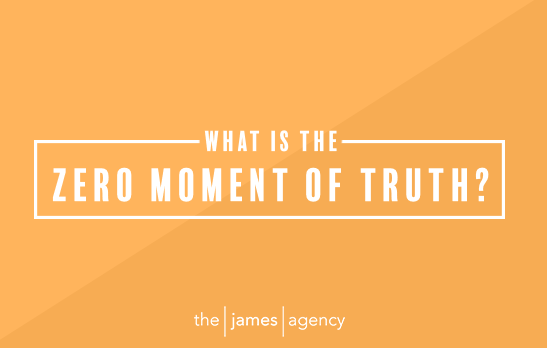Let’s be real – marketing got hard.
The marketing technology landscape has become a digital arms race of tools and technology leaving many brands and businesses feeling overwhelmed on the battlefield of impression share, reach, frequency and yes, conversions.
Not only has technology evolved at an alarming rate, consumers have evolved too.
We have officially entered an age where more millennials – the largest online buying power – are blocking ads than those who are not. At an industry average click through rate of 0.06%, it’s more likely you’ll survive a plane crash than have someone click on your banner ad – yet banner ads are a $44 billion industry and growing at a rate of 7% per year.
With consumers on high alert, display advertising isn’t the only ad type consumers are skeptical of. Only 13% of consumers trust online ads. Including offline advertising, only 32% of consumers trust any advertising in any channel.
But that’s enough with the doomsday talk…
While the demands of consumers have become more varied and fickle than ever, they’ve sent a clear signal of rewarding the brands who put the consumer first and develop marketing and advertising around their needs, and their needs are clear.
73% of all purchase decisions – online or off – start on either Google or Amazon. 88% trust online reviews as much as personal recommendations, 47% of millennial purchase decisions are impacted by social media with shoppers 29% more likely to make same-day purchases when using social media to help shop before visiting the store.
Taking all of this in, it’s clear to see that a line has been drawn in the sand between the old model and new model of advertising. So, let’s take a look at what the differences are in these models and what businesses can do today to win tomorrow.
The Old Advertising Model
Businesses have been advertising in print for more than 300 years, large format out-of-home printing for 200 years, radio for 100 years and television for 70 years. During this time, the process for advertising has remained largely unchanged in terms of building brand awareness and purchase intent among consumers.
Stimulus
In the old model, the far majority of advertising started by asking the question, “How many people can we reach with a single message?” The answer to this question often resulted in high cost television ads, radio campaigns, print ads in high circulation newspapers or a large out of home presence.
This became known to brands as the stimulus. Take the brand message, and through mass media communication, serve as many impressions as possible.
After brands went to market with their stimulus there was little they could do other than wait for the result. Be it phone calls, foot traffic or point of sale purchases.
Shelf
The First Moment of Truth (FMOT)
The next touch point brands had with consumers was when a consumer was confronted with the product in-store or in real life and was faced with the question, “Do I buy this brand, or this brand?”
This became known as “The First Moment of Truth.”
If executed correctly, in this model, stimulus played the role of building brand recall and trust with consumers. This was done in hopes that when placed in a purchase setting, with all else being equal (price, promise, quantity), the brand with higher recallability and trust is the brand that would be purchased.
Experience
The Second Moment of Truth (SMOT)
The next touchpoint between a brand and a consumer came when a consumer purchased a product and experienced its quality as per the promise of the brand.
This became known as, “The Second Moment of Truth.”
For example, if a consumer saw a laundry detergent billboard or heard a radio ad touting “100 percent stain fighting guarantee”, the product better remove 100 percent of stains when the consumer uses it.
It was then up to the consumer to decide to buy the product again because it passed the SMOT, or go with a competitor next time. Beyond that, there was little feedback a consumer could provide to a brand outside of a few word-of-mouth comments to friends and neighbors.
The New Advertising Model
While the old model stood unchanged for close to 300 years, a new moment has emerged.
With 88% of US consumers researching online before buying a product, the internet has changed the way consumers are interacting with brands, products or services, leading consumers to make purchasing decisions well before actually entering a store or adding a product to their online shopping cart.
The Zero Moment of Truth (ZMOT)
The Zero Moment of Truth, a term coined by Google in 2011, fully emerged in the mid-2000s when mobile device adoption rates skyrocketed, social media networks took off and unbiased third-party review sites took center stage.
With the ZMOT falling directly between the initial stimulus and the first moment of truth (the purchase), interested customers now have unlimited resources available to research, fact check, price check, read testimonials and much more.
The majority of resources consumers lean on to inform purchase decisions fall outside the direct control of the businesses doing the advertising.
The ZMOT represents the first time in the previously business driven advertising machine, that consumers have owned a piece of the purchase path.
And own it they have.
In Google’s initial research, they determined the average consumer was utilizing 10.4 sources of information between seeing an ad and purchasing a product. By 2015 this number had climbed to an average of 22 sources, up to 40+ in industries like travel and hospitality.

Winning The ZMOT
With consumers referencing 20+ pieces of content before ever entering a store or purchasing a product, brands must facilitate every step of the online research process.
This can be done by soliciting positive reviews and distributing those reviews among various third-party review sites.
A consistent organic social media strategy will ensure a brand appears active, responsive and educated about the industry they operate within.
A strong blogging strategy can be used to develop content which addresses customer concerns, entertains communities, and provides endless content for social media posts and email marketing newsletters.
Speaking of email, for every $1 invested in growing an email list, $38 is returned. Even better, this channel can be fully automated through drip and trigger campaigns to ensure a brand is consistently appearing at the top of their customer’s inbox.
When organic efforts reach a plateau, paid social media and paid search ads are an effective tool to target high-intent users and keyword phrases to maximize reach and return on investment.
The Purchase Journey Has Permanently Changed
Recognizing that the purchase journey has permanently changed is a business’ first step toward drawing a new map for future marketing efforts.
The very thing that many businesses and marketers are fearful of – going back to the drawing board to redevelop a digital-first marketing initiative – is the very thing that must be done to keep any brand or business competitive in 2017 and beyond.
Digital marketing, or more specifically content marketing is where businesses build communities, develop brand advocates, lower acquisition costs, increase conversion rates and increase customer lifetime value.
You know, all of those things that signal a healthy, sustainable business built to thrive in a digital-first world.




